Mobile Virtual Reality Trunks (Grades 7+)
Experience the power of virtual reality to enhance Holocaust education through 360-degree immersive technology. “Walk” with Holocaust Survivors through childhood hometowns and concentration camps as they share their stories of survival, creating an unforgettable lesson for your students. Based on Illinois Holocaust Museum’s award-winning virtual reality films A Promise Kept (watch trailer) and Don’t Forget Me (watch trailer), this experience is available for 7th – 12th grade & college/university classrooms, non-profit organizations, and libraries across the United States.
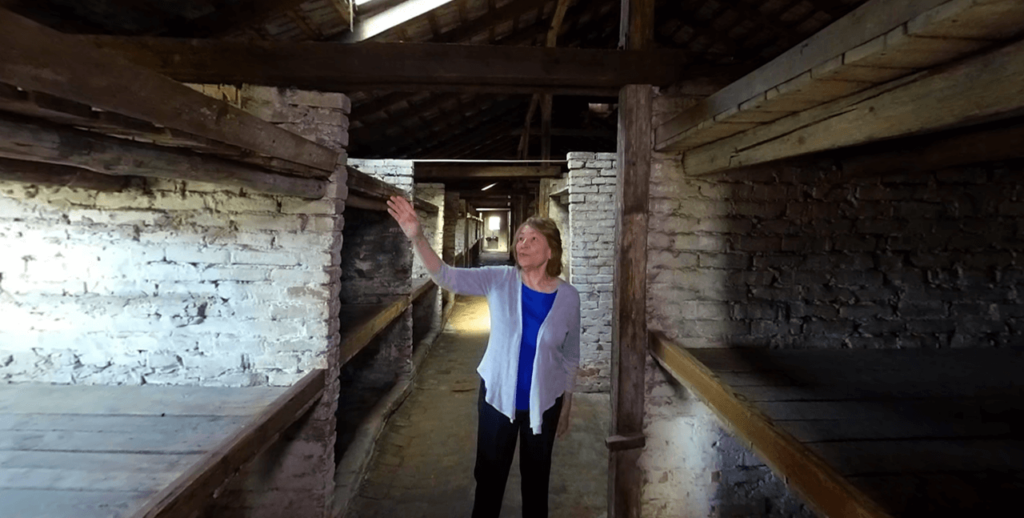
[Virtual] Holocaust: Historical Perspectives through Different Voices (Grades 7-12)
In this virtual teaching trunk, students will focus on the historical impact of the Holocaust on individuals, such as life in hiding, the ghettos, and camps.
Themes
- Human and moral implications of individual choice, responsibility, and memory
- Influences on decisions to become a bystander
- Actions that encourage becoming an Upstander
Materials
- Ready-made lesson plans for teachers to use synchronously or asynchronously
- Rentable e-books and corresponding activities & questions
- Survival in Auschwitz
- All But My Life
- The Cage
- The Christmas Menorahs
- Access to our online exhibition on the Warsaw Ghetto Uprising, including extension activities
- Artwork and activities from the Museum’s Act of Art gallery
- Virtual “artefact” explorations featuring the amazing survival stories of local Chicagoland Holocaust Survivors
- Documentaries of Chicagoland Survivors’ Holocaust experiences and corresponding teachers’ guide

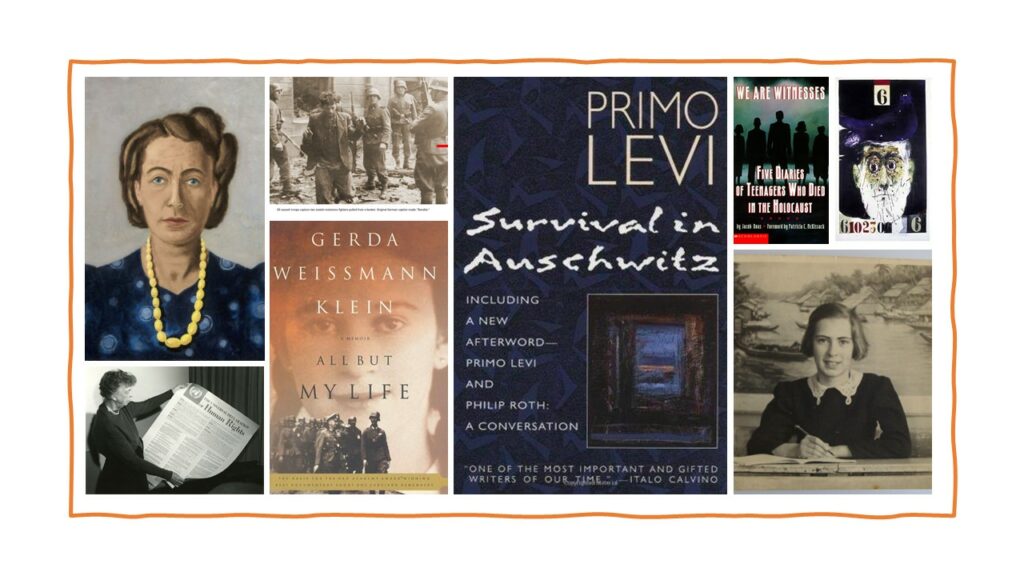
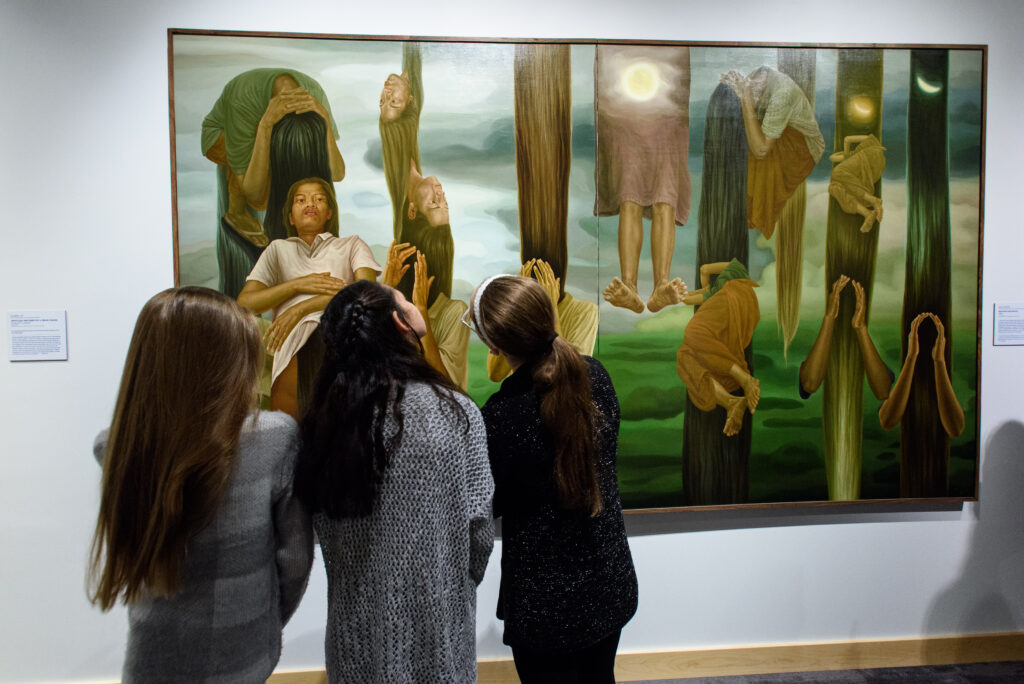
[Virtual] Midwestern Holocaust Survivor Stories (Grades 7-12)
In this virtual trunk, students will have the opportunity to focus on and connect with the personal stories of local Holocaust survivors that live in the greater Midwestern region of the United States.
Themes
- Empathetic connection to individual survivor stories and local history connections.
- Human implications of choice and importance or memory.
- Influences on decisions to become Upstanders.
Materials
- Ready-made lesson plans for teachers to use synchronously or asynchronously
- Virtual “artefact” explorations featuring the amazing survival stories of Midwestern Holocaust Survivors in Illinois and Iowa
- Artwork and activities from the Museum’s Act of Art gallery
- Recorded audio and video testimonies from the collection of the Iowa Jewish Historical Society
[Virtual] On Our Watch: Genocide & Human Rights (Grades 7-12)
Students will have the opportunity to expand their knowledge of the Holocaust and begin reflecting on the complexities of human rights violations and genocide. Resources will engage students in the exploration of genocides in Armenia, Cambodia, Bosnia, Rwanda, and Darfur, as well as human rights abuses against Japanese Americans during World War II and child soldier recruitment in countries such as Uganda and Sierra Leone.
Through this combination of history and the examination of human behavior, we provide educators and students with tools necessary to explore the precarious nature of human and civil rights, and delve into the dynamics and relationships that make up our diverse communities.
Materials
- Ready-made lesson plans for teachers to use synchronously or asynchronously
- Rentable e-books and corresponding activities & questions
- We Wish to Inform You That Tomorrow We Will Be Killed With Our Families: Stories from Rwanda
- Black Dog of Fate
- First They Killed My Father: A Daughter of Cambodia Remembers
- Presentations on the genocides in Rwanda, Armenia, Cambodia, and Bosnia-Herzegovina
- Presentation focused on Upstanders and resistance during genocides
- Artwork and activities from the Museum’s Act of Art gallery
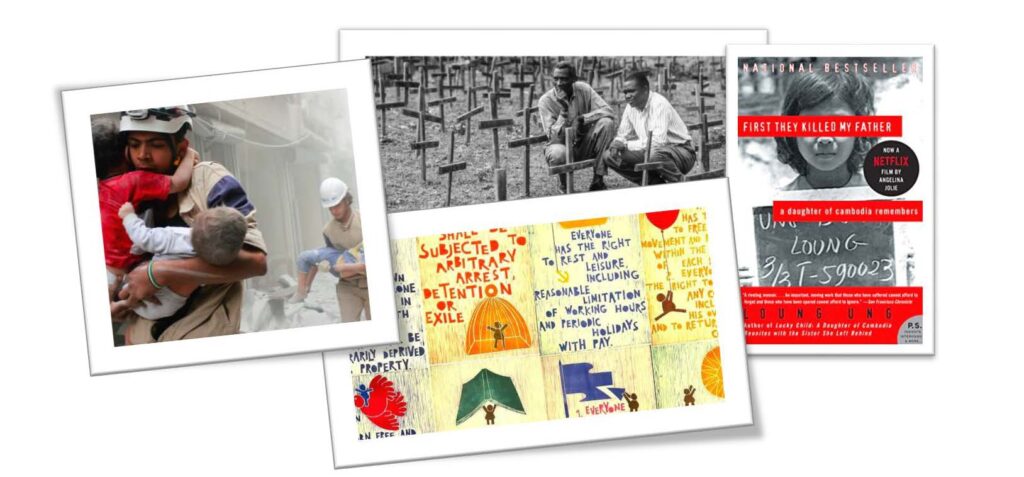
Historical Perspectives through Different Voices (Grades 7-8)
Through examination of fiction and non-fiction, diaries, and biographies, students will focus on the historical impact of the Holocaust on individuals and be introduced to the more detailed history of the Holocaust, such as life in hiding, ghettos, and camps.
Materials
- Ready-made lesson plans for teachers to use synchronously or asynchronously
- Rentable e-books and corresponding activities & questions
- Bearing Witness: Stories of the Holocaust
- Torn Thread
- Hitler Youth: Growing Up in Hitler’s Shadow
- Replica textiles, documents, and photographs
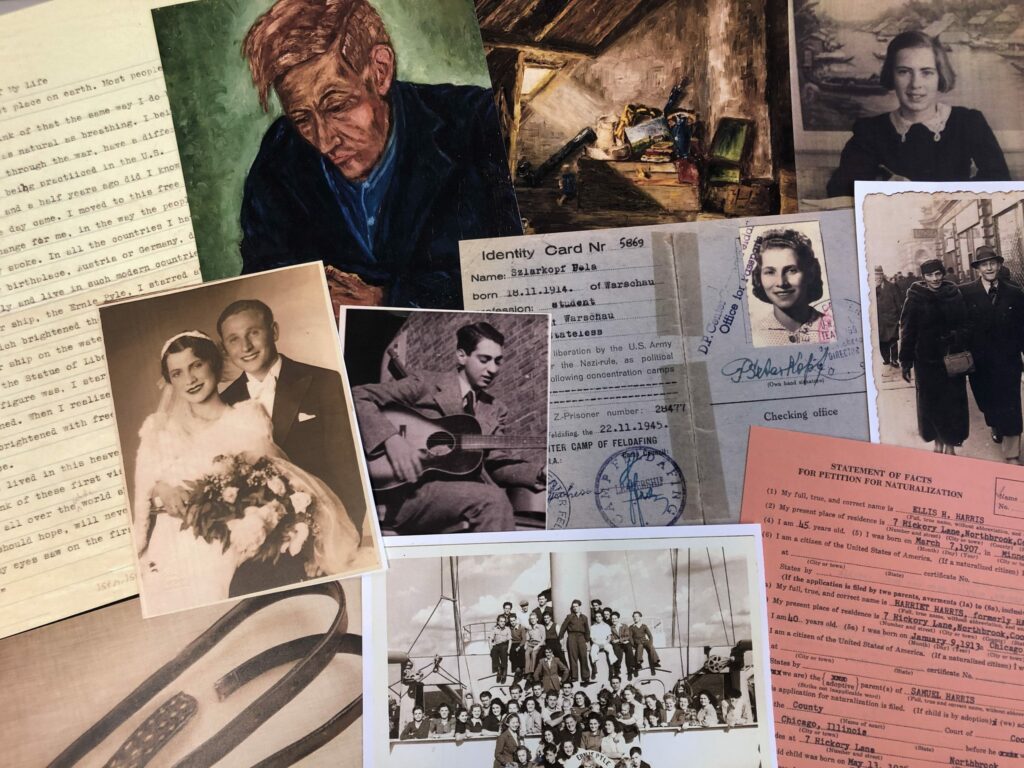
Survivor Stories: Holocaust Eyewitness Mini Trunks (Grades 7-12)
Bring history to life through the personal memoirs and testimonies of Survivors and learn by handling replicas of artifacts from the Museum’s photography and document collection.
This teaching trunk highlights the lives of Holocaust Survivors and features stories of their personal journeys of endurance, resiliency, and strength during the Holocaust. Included in these mini teaching trunks are literature circle sets of survivor memoirs, mini-documentary films, and “artefact” kits that include replicas of many objects from the Museum’s collection. This Survivor-focused trunk will allow educators to facilitate robust conversations addressing the following questions:
- How did a boy survive for two years, alone in an attic?
- How did 599 female prisoners working in a factory help keep a young girl alive in Auschwitz?
- How did a sister save her young brother by keeping him hidden in a concentration camp?
- What can we learn from the paintings of a teenage boy in hiding?
Materials
- Will to Live: One Family’s Story of Surviving the Holocaust by Adam Starkopf
- Lucie’s Hope by George Mueller
- The Promise by Eva Schloss and Barbara Powers
- Final Transports: The Holocaust Stories of Magda and George (documentary) and teachers’ guide
- Childhood Lost: The Holocaust Stories of George and Steen (documentary) and teachers’ guide

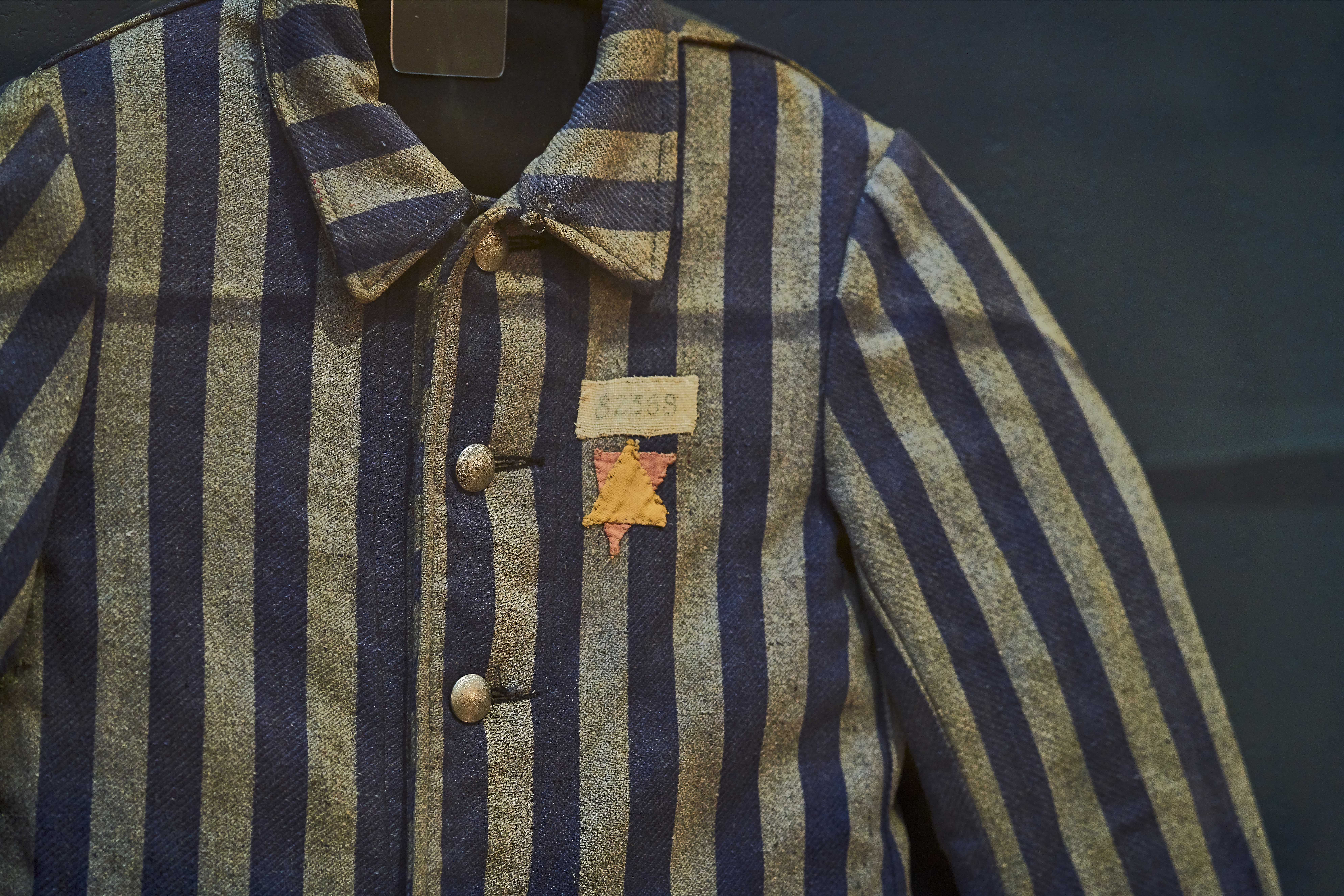
Midwestern Survivor Stories: Holocaust Eyewitness Mini Trunks (Grades 7-12)
Make connections and bring local history to life through the stories and lessons of Midwestern Holocaust Survivors. Students will have the chance to interact with local stories, testimonies, and replicas of artifacts from the collections of the Illinois Holocaust Museum and the Iowa Jewish Historical Society.
This teaching trunk highlights the lives of Holocaust Survivors who relocated to the Midwestern United States and features their stories of incredible strength, resilience, and survival during the Holocaust. Included in these mini teaching trunks are half-class sets of survivor memoirs, video and audio recorded testimonies and interviews, and “artefact” kits that include replicas of objects from the Museum’s and Society’s collections. This Midwestern Survivor-focused trunk will allow educators to encourage robust and empathetic conversations addressing the following questions:
- What makes someone a resilient individual?
- How can a pair of scissors change a family’s life?
- What does a small red sweater mean to an immigrant family with a newborn child?
- How did 599 female prisoners working in a factory help keep a young girl alive in Auschwitz?
- How does a young boy survive in an attic for two years?
- How does a local Jewish deli become an important place to meet for Holocaust survivors?
- How does someone who survived unimaginable horrors build a life in the Midwestern United States?
Materials
- I Still See Her Haunting Eyes by Aaron Elster and Joy Erlichmann Miller, Ph.D
- Saved by Schindler by William B. Friedericks about Celina Karp Biniaz
- Artefact kits for 6 Midwestern Holocaust Survivors and their stories
- Recorded audio and video testimonies from the collection of the Iowa Jewish Historical Society
Investigating Human Behavior (Grades 9-12)
This trunk provides a comprehensive study of the history of the Holocaust through an analysis of human behavior and the categories of victim, perpetrator, bystander, helper, and collaborator. With this curriculum, students will analyze connecting themes including the human and moral implications of individual choice, responsibility, and memory. The trunk provides a framework to discuss what influences our decisions to be bystanders, and what encourages us to become Upstanders.
Materials
- Salvaged Pages
- A Partisan’s Memoir
- A Scrap of Time
- Replica textiles, documents, and photographs
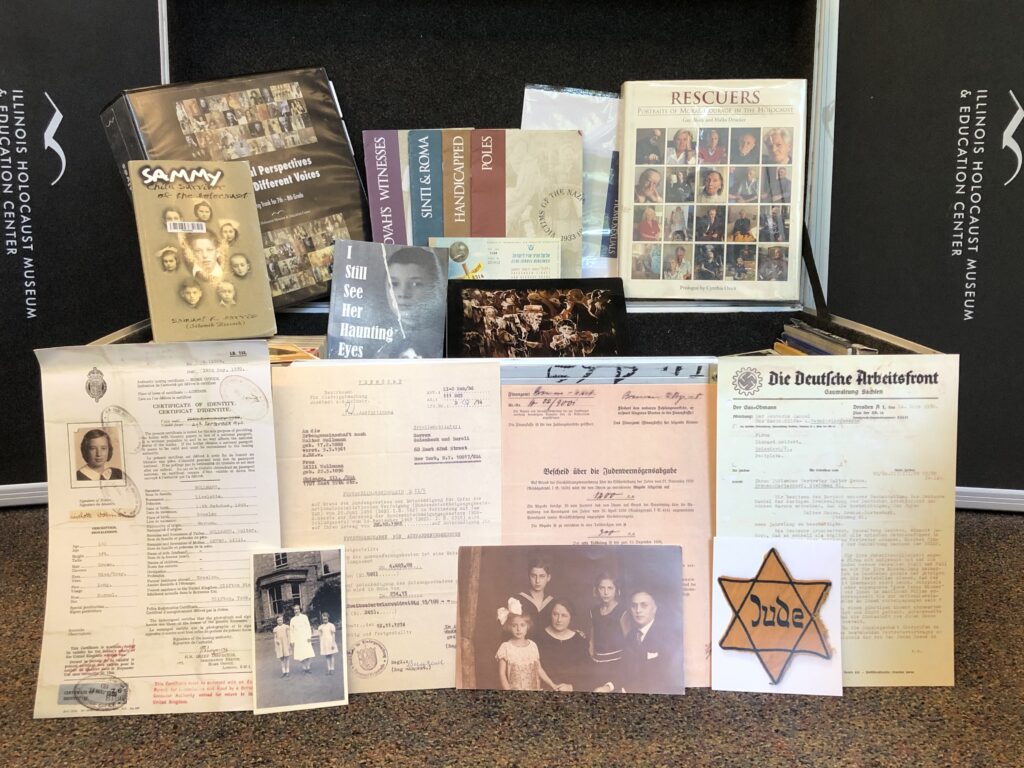
On Our Watch: Genocide and Human Rights (Grades 7-12)
Students will have the opportunity to expand their knowledge of the Holocaust and begin reflecting on the complexities of human rights violations and genocide. Resources will engage students in the exploration of genocides in Armenia, Cambodia, Bosnia, Rwanda, and Darfur, as well as human rights abuses against Japanese-Americans during World War II and child soldier recruitment in countries such as Uganda and Sierra Leone.
Materials
- Not on Our Watch: A Mission to End Genocide in Darfur and Beyond
- Confronting Genocide: Never Again
- Looking Like The Enemy: My Story of Imprisonment in Japanese American In Japanese American Internment Camps
- DVDs, posters
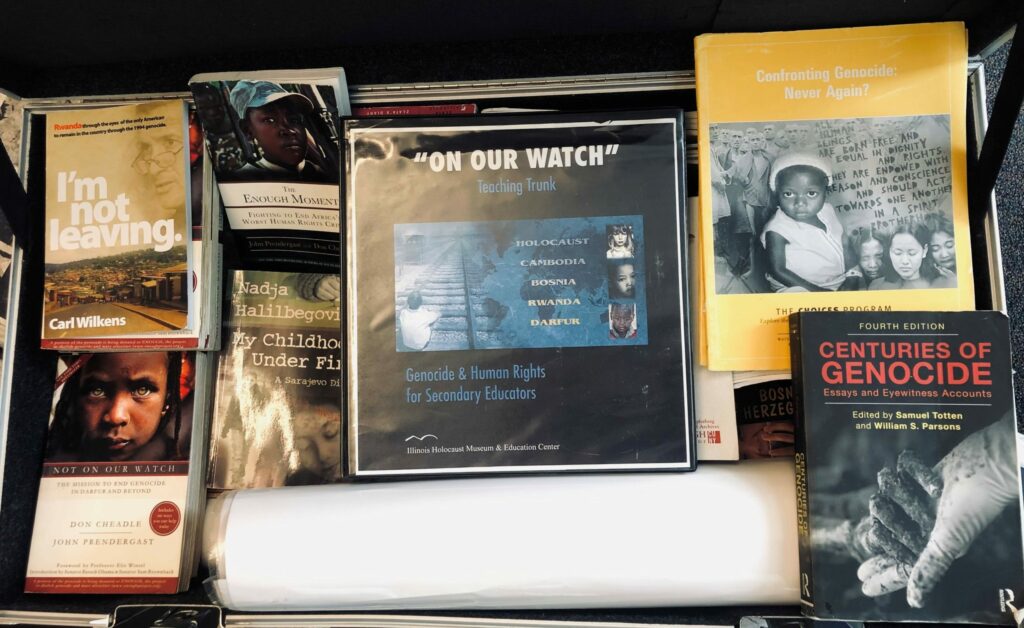
Hour of Need: A Teaching Trunk for the Graphic Novel (Grades 6-12)
This mini teaching trunk is available starting 2/21/2024. Bring Holocaust history to your classroom via classroom sets of the award-winning graphic novel, Hour of Need, which explores the history of the Holocaust in Denmark and the remarkable story of a family’s survival through the help of ordinary people who became upstanders during World War II.
Themes
- Empathetic connection to an individual family’s story told in a new, artistic medium.
- Local family history and connections.
- Human implications of choice and resistance, and becoming an Upstander.
Materials
- Classroom sets of Hour of Need, the award-winning graphic novel.
- Ready-made educator’s guide, lesson plans and activities created in collaboration with Humanus Network.
- Additional materials centered on Theresienstadt, reflecting the experiences of the Danish Jews who were unable to escape.
Hour of Need is supported by the Abe and Ida Cooper Foundation.
